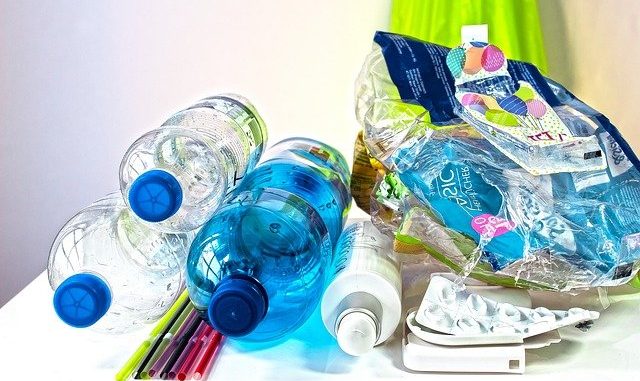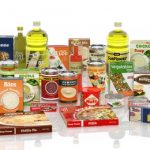
Flexible packaging has certainly come under the spotlight as governments and industries tackle climate change and sustainability. The European Union and the USA too for example have both been under immense political pressure and from consumers themselves to tighten the laws on packaging generally. Flexible packaging as a particular type of packaging is no different and is susceptible to these twin pressures.
Can flexible packaging meet the rigorous demands of political movements and consumer desire to make it greener without losing the very reason it exists in the first place?
The Big Issue
The amount of plastic in our oceans is starting to worry if not frighten many concerned about the impact that human waste is having on the environment. A number of organizations, the Ellen MacArthur Foundation in particular believe there will be more plastic by weight than fish in the oceans when we get to the year 2050
In the EU, the three-word mantra about packaging of any sort we learnt at a recent European Innovation Council Meeting presentation was on reduce, reuse, recycle. That three-term phrase is the basis of a three-pronged strategy for tackling flexible packaging sustainability.
The EU is now passing regulations which will significantly increase recycling and reduce the use of single-use plastic. In doing so the packaging industry may well find that targets and quotas become so severe as to make it almost impossible to meet. Whilst tackling food waste, the challenge is to come up with increasingly innovative ideas that will maintain food quality without compromising safety and but also ensure lower food and packaging wastage.
Single-Use Plastics: An Example Of Flexible Packaging
When we think of single-use plastic we will no doubt be thinking of what we might find on the beach or washed up on a Portuguese estuary. Under the EU’s Single-Use Plastics Directive the sorts of items we find will be cigarette butts, balloons, plastic cups & lids, sanitary applicators, drink bottles, bags, crisp packets, cutlery, straws and cotton buds.
All these single-use items now make up 50% of all marine waste and certainly all these items have been washed up in vast amounts on particular shore-lines. The Portuguese estuary I’m thinking of was one of the worst examples of plastic contamination ever because all the items were discharged into a river and then were washed up in a think plastic rime at the edges where the density of the fresh water turned to sea water. Every type of plastic waste was there!
Packaging Is Critical In Stopping Food Waste
Consider food as a our topical example. Without food packaging we would not have a food supply chain. It is there to allow the proper and safe delivery of food to the consumer. It also helps not only contain food in a precise manner but provides information through labelling and preserves it throughout the entire value chain. The consumer is the end point for all that packaging but one of the main actors in what happens to the waste afterwards.
The Confusion In The Consumer’s Mind Over Plastic Packaging And The Effect On The Environment
The consumer thinks packaging is more harmful than anything else to the environment. About 89% of us have the view that packaging material is most damaging as opposed to discarded foods as waste. There are no other contributors in the consumer’s mind – it is a simple recognition of what is causing the damage.
Naturally, it’s not as simple as that.
When a Life Cycle Analyst inspects packaging use, they see the big issues on the environment differently. AMERIPEN issued a report on the Value of Packaging in 2012 which is still pertinent today. In one case they examined greenhouse gas emissions for the US poultry supply chain. The report showed that packaging accounted for only 4 % of the emission issue whilst production (34%), processing (20%), home cooking and unavoidable waste (17% each) were the big four contributors. In fact packaging was helping to reduce waste and indeed reduce greenhouse gas emission but this benefit was diluted and even ‘deliberately’ lost or became an obfuscation.
The general feeling amongst packaging analysts is that as global economies change, the need for packaging increases and becomes a valuable vehicle for helping the circular economy rather than hindering it.
The Impact Of Plastic Use With Time
The Ellen Macarthur Foundation looked at two time points for plastics use, now as it was 2014 and the future as a prediction for 2050.
In 2014, 311 million Tonnes of plastic was produced and by 2050 this will rise to a staggering 1,124 million Tonnes. As a result, where the ratio of plastic to fish in the oceans by weight was 1:5, by 2050 this will be probably over 1:1 if not greater. Likewise, plastic’s share of global oil consumption was 6% in 2014 becoming 20% in 2050. Also, in 2014, plastic’s share of the carbon budget was just 1 % but became 15% in 2050.
It means that plastic through the ages is becoming all the more consuming and having a greater impact at an alarming level on economy and industrial production. Its critical to know what to do today to prevent an unsavoury reality of tomorrow.
Current Plastic Recycling Levels
At the moment only 10% of plastic is recycled globally. The annual production level of plastic is 78 million Tonnes and only 14% is collected for recycling with 4% being lost in the process and 6% involved in cascaded recycling. The remainder, 40% goes straight to landfill, 32% is lost through leaching and 14% is lost through incineration. Reducing those latter three numbers is the strategic goal of environmentalists.
The Plastics Use Pathway
Step 1: Plastic is made from raw hydrocarbon building blocks.
Step 2: It is turned into packaging.
Step 3: Packaged goods are produced from this packaging
Step 4: the packaged goods are distributed.
Step 5: The packaged goods are consumed.
Step 6: The plastic packaging is removed and destroyed by whatever means and that is usually the end of it. What the circular economy wants to do is get rid of step 6 and return it to any of the previous steps.
Multiple pathways For Creating A Circular Economy
Three types of recycling can be thought about: reuse, mechanical recycling and chemical recycling.
Reuse allows packaging to be used many times without affecting performance or creating waste. It feeds packaging back into step 3.
Mechanical recycling is about plastic waste being reprocessed and used again to make new products. It feeds the packaging back into step 2.
Chemical recycling converts plastic waste into building blocks for making new plastic products with new or virgin properties. This feeds packaging as a raw material into step 1.
Maintaining Sustainability In Plastic Packaging: The Plastic Phoenix
Plastic packaging gets a bad name but if it is to survive then using innovative ways means it will need some form of reinvention. Like a phoenix that rises from the ashes, new ways of dealing with this material will hopefully mean its continued use.
The areas for maintaining the plastic circular economy are many and varied. It literally means all aspects of packaging need to be looked at again. Think:
Materials
- what’s plastic made of now but could be made of later. We should look at post-consumer plastics, at plastic-based and fibre-based materials.
Design
- How is all this packaging made and put together. We should simply multilayer films but may be then look at the main components and how they can be recycled. It could be based around formats that can be separated.
Education
- The consumer needs to take part and indeed should be encouraged. There are many who want to take an active role in this because of their desire for recycling but it can be helped further in technology with better recycling labelling, the presence of digital information and resin identification codes to make the process of recycling easier and more straightforward.
What Materials Could be Used For Sustainable Flexible Packaging?
Materials for sustainable packaging may come from a number of sources. For example, recycled plastic is very common but not necessarily popular. It will have been used before and it described as ‘Industrial Reclaim Plastic’. There is limited availability of this type of food-compliant packaging plastic globally.
An alternative is paper or fibre-based packaging which has a limited shelf-life and is only suitable for dry products. Such packaging loses its integrity with any moisture and ruins the product it contains too.
Finally, bio-degradable or compostable packaging might suffice although it too has limited application and in some cases cannot be composted at home. That sometimes means they must be composted at a specific site designed for such packaging materials.
How Does Design Fit In?
Generally most if not all flexible packaging is made up of multiple layers. This can be from 3 layers to 17 layers. Each layer has a specific purpose and so removal of even one has significant consequences for the storage performance of the product. The materials include adhesives, barrier materials, inks etc. Some packaging also includes down-gauging barriers and abuse layers made from nylon and/or EVOH.
The great challenge with multilayer packaging is that it is extremely difficult to recycle.
At the moment, there is a push to simply packaging to overcome this multi-layer dilemma, hence the push to mono materials such as PE (polyethylene) and PET which are most suitable or amenable for recycling but they do have a limited shelf-life. Unfortunately too they are not all suitable for products such as meats say because there is not enough of a barrier to prevent both food spoilage or potentially stop food contamination.
To improve matters it might be feasible to keep some of the abuse layers as they are called in multi-layer packaging but just down-gauge them.
Hybrid packaging which combines plastic and paper or cardboard say is problematic for the consumer who needs to separate one from the other. Limited use unfortunately: not good for fresh moisture products.
What About Recovery as A Strategy?
There is a considerable lack of recycling infrastructure dedicated to flexibles. There are few facilities for mechanical recycling and fewer still for composting such materials on a commercial scale.
Multilayer packaging is made of so many layers that unfortunately not all of them are suitable for composting.
Chemical recycling is only best suited for polyolefins. Mixed materials containing nylon and/or EVOH are simply not compatible.
Reusable packaging loops may be possible for recovery. If you can reuse multiple times then great but there are concerns about hygiene and food safety.
Education On Reusing Plastics Should be Pushed More
Through education we as consumers can all learn how to handle flexible packaging. We have to understand what is truly sustainable. There are too many terms that suggest sustainability but add to confusion or the consumer simply doesn’t understand the distinction between them.
The terms such as biodegradable, bioderived, renewable etc. are used with abandon. Are these terms just jargon? Compostability has lots of depth when considering home versus industrial methods. Not all materials fits these terms but have some specific benefit.
Petroleum resourced materials can degrade more naturally than some natural products. It’s all about understanding.
The other factor is consumer acceptance. Will they accept an sustainable product?
Collaborate For Change
If the packaging industry is driving the need for change then it must work closely with other industries across the value chain to create better circular business models. Packaging, packaged products, and product sourcing and distribution are all cogs in a system that impact each other.
Food processes, retailers are all involved in this business model.
A number of organizations are now collaborating to create a circular plastics economy. Three in particular come to mind:
CEFLEX – a collaborative consortium representing the flexible packaging value chain with a focus on Europe.
Sustainable packaging Coalition – a leading voice on packaging sustainability with membership across the full supply chain and a focus on the USA.
Alliance To End Plastic waste – a global business collaboration which develops, accelerates and deploys solutions to end plastic waste as its monicker states and is focused on Asia.
Another final strategy is to make it easier for consumers to recycle their waste generally. We need to leverage technology to engage consumers and prevent plastic waste overall and the consumer can help here.
The consumer must be able to recycle properly meaning they can segregate the different plastics, types of packaging into different sections. Labelling is critical and they must be understandable and readable. Digital tools are useful in the corner of a package as they can help by reading the barcode or other device through their phone. For example, what the type of plastic is and then how to deal with it.
Finally:
Plastic packaging is essential for delivering goods across the supply chains. It provides product protection and resists damage to the product it is surrounding. It also prevents cross-contamination and promotes hygiene.
There is a circular economy which is essential for minimising environmental impacts, for promoting resource efficiency and it creates new business opportunities.
Then last but not least there is innovation which is essential for realizing a circular economy for plastics. It combines new ways of thinking which drives economic growth and societal benefits.


At last some truth about materials in packaging and the bank-army-government system stopping it happening.